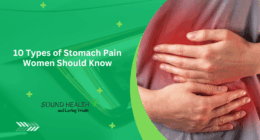Statins are widely used medications that play a critical role in managing cholesterol levels and preventing heart disease. However, like all medications, they come with potential side effects that should not be overlooked. This article will explain what statins are, how they work, the benefits they provide, the four most common side effects—and how to reverse them without raising cholesterol—as well as why they might be necessary in your 50s. Finally, it will provide a clear perspective on managing cholesterol effectively.

What Are Statins and How Do They Work?
Preventive cardiologist Elizabeth Klodas, MD, explains that statins are drugs designed to lower LDL cholesterol, often called “bad cholesterol,” which can build up in arteries and lead to heart disease and stroke. Statins work by blocking an enzyme in the liver critical for cholesterol production. This blockage prompts the liver to remove more cholesterol from the bloodstream, thereby reducing overall blood cholesterol levels.
The Benefits of Statins: “It Feels Like Taking a Vitamin”
Many patients report that taking statins feels as routine and straightforward as taking a daily vitamin, reflecting their role in long-term cardiovascular health management. Statins have been shown to significantly reduce the risk of heart attacks and strokes by lowering LDL cholesterol. This preventive benefit is especially valuable for individuals with a family history of heart disease or those who show early signs of arterial plaque buildup.
The 4 Most Common Statin Side Effects—and Why They Happen
While most people tolerate statins well, some experience side effects due to the way these drugs interact with liver and muscle tissues, blood sugar regulation, and, in rare cases, cognitive function. The main side effects include:
- Liver Issues: Statins can cause a temporary rise in liver enzymes, which signals liver inflammation. While often mild and not requiring cessation, severe liver enzyme increase is rare but may necessitate a change in medication. The liver is directly involved in processing statins, which explains this effect.
- Muscle Aches: One of the most common complaints is muscle pain or weakness, affecting about 10% of users. Statins can interfere with muscle cell function, sometimes causing myalgia or even a serious condition called rhabdomyolysis in very rare cases. Patients should report unexplained muscle pain to their healthcare provider immediately.
- Increased Risk of Type 2 Diabetes: Statins may slightly raise blood sugar levels, increasing the risk of type 2 diabetes, particularly in those already predisposed due to factors like obesity or insulin resistance. This side effect is generally outweighed by the cardiovascular benefits but should be monitored regularly.
- Cognitive Changes: Some users report memory loss or mental fog. Although scientific evidence is not conclusive, these symptoms tend to be reversible upon stopping the medication. Interestingly, some research even suggests statins might improve brain function in certain cases.
Why You May Need Statins in Your 50s
As people enter their 50s, their risk of developing cardiovascular disease typically increases due to natural changes in metabolism and the cumulative effect of lifestyle factors. Statins are often prescribed at this stage to mitigate this heightened risk, especially if cholesterol levels remain high despite diet and exercise changes. Family history, presence of diabetes, hypertension, and smoking could also contribute to the decision to start statin therapy.
The Bottom Line on Statins and LDL: “We Can Take Control”
Managing LDL cholesterol proactively with statins allows individuals to take control of their heart health. While side effects exist, they can often be managed or reversed without losing cholesterol control. Adjustments in dosage, switching statin types, or complementary therapies like CoQ10 supplements may help mitigate side effects. Ultimately, a well-informed dialogue with healthcare providers ensures the benefits outweigh the risks, enabling a healthier, longer life free from cardiovascular events.
Final Note
Statins are essential tools in preventing heart disease by lowering harmful LDL cholesterol. Their benefits are substantial enough that many describe taking them as routine as a daily vitamin. Common side effects—including liver enzyme changes, muscle pain, increased diabetes risk, and cognitive symptoms—are generally manageable with medical supervision. For many entering their 50s, statins provide a critical safeguard against the growing risk of cardiovascular disease. Understanding and addressing side effects without raising cholesterol ensures patients maintain their health with confidence and control.
Also Read | How EMDR Therapy Helps Women Over 50 Heal Trauma










